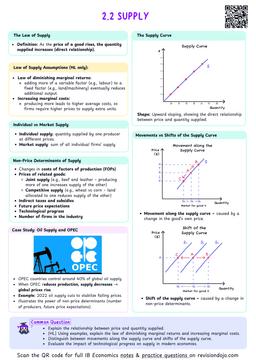Firms can use $PED$ to maximise revenue by changing prices:
- If the demand is currently elastic, then decreasing prices would lead to a higher revenue.
- If the demand is currently inelastic, then increasing prices would lead to a higher revenue.
- If the demand is currently unit elastic, $PED=1$, then there can be no effect.
In essence, when focusing on a straight line curve, the price where $PED=1$ will lead to the highest revenue because:
- If $PED < 1$, the prices can be increased, leading to the $PED$ to increase as well (HL section 2.5.2) until $PED = 1$ as otherwise your revenues will fall.
- Similarly if $PED > 1$, then the prices can be decreased as $PED$ decreases (HL section 2.5.2) until eventually at $PED = 1$ as otherwise your revenues will fall.
The firm's profit and total revenue should not be confused with each other!
- $\text{Profit} = \text{Total Revenue} - \text{Total Costs}$
- Meanwhile: $\text{Total Revenue} = \text{Price} \times \text{Quantity Demanded}$
Government
Governments can also use information about the price elasticity of demand to set indirect taxes to earn revenues and influence consumer behaviour.
Indirect taxes
Taxes levied on spending on goods and services. They are called indirect because while consumers contribute to part or all of the tax, it is the suppliers (firms) who collect and transfer these taxes to the government authorities (consumers pay the taxes indirectly).
Government revenue is calculated by:
$$ \text{Government Revenue} = \text{Tax Per Unit} \times \text{Quantity Demanded} $$


